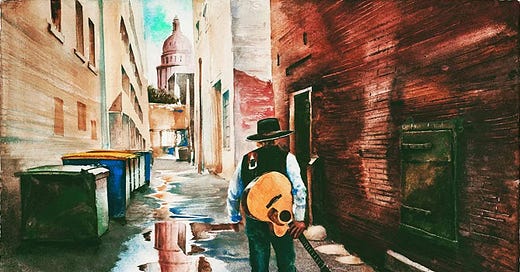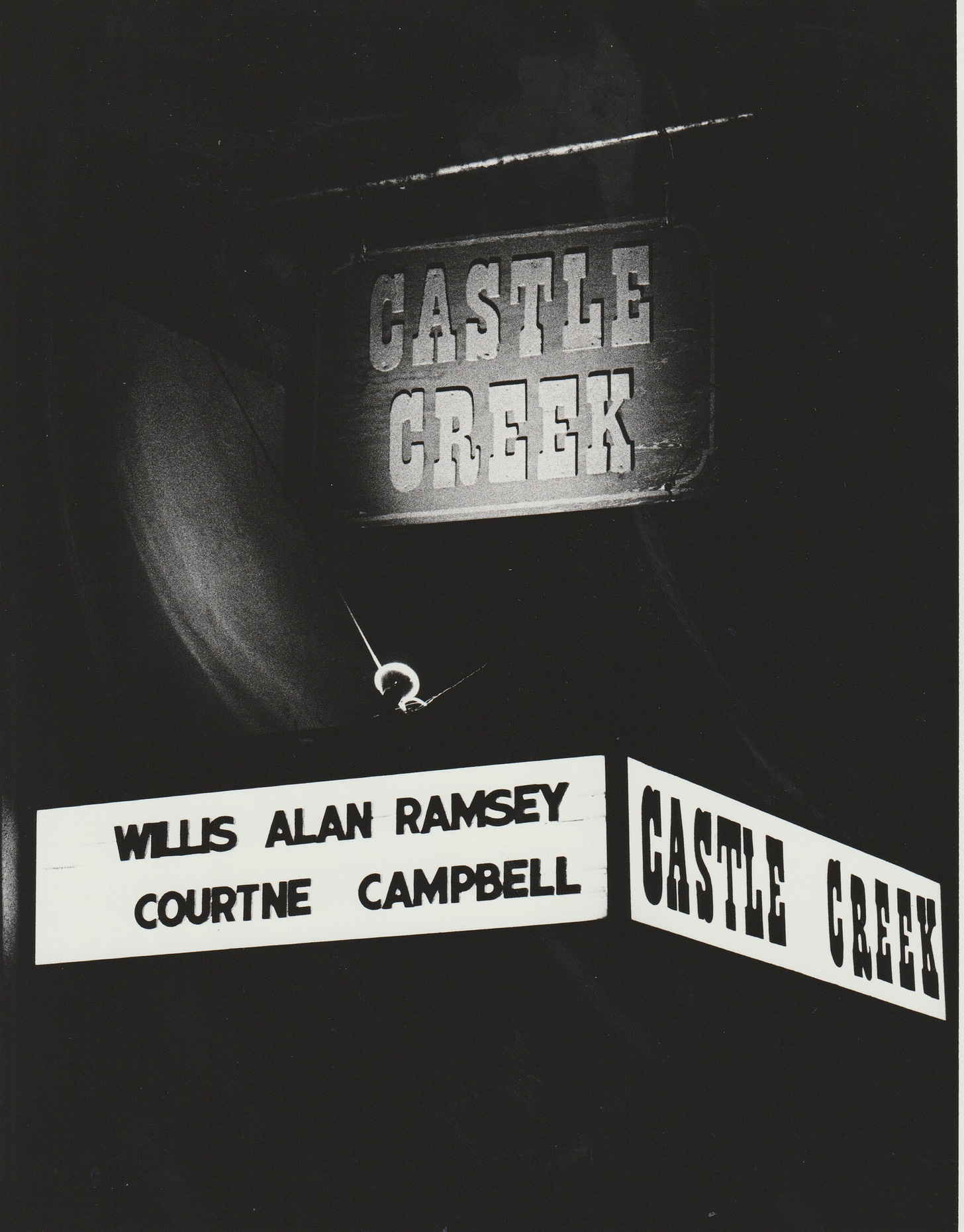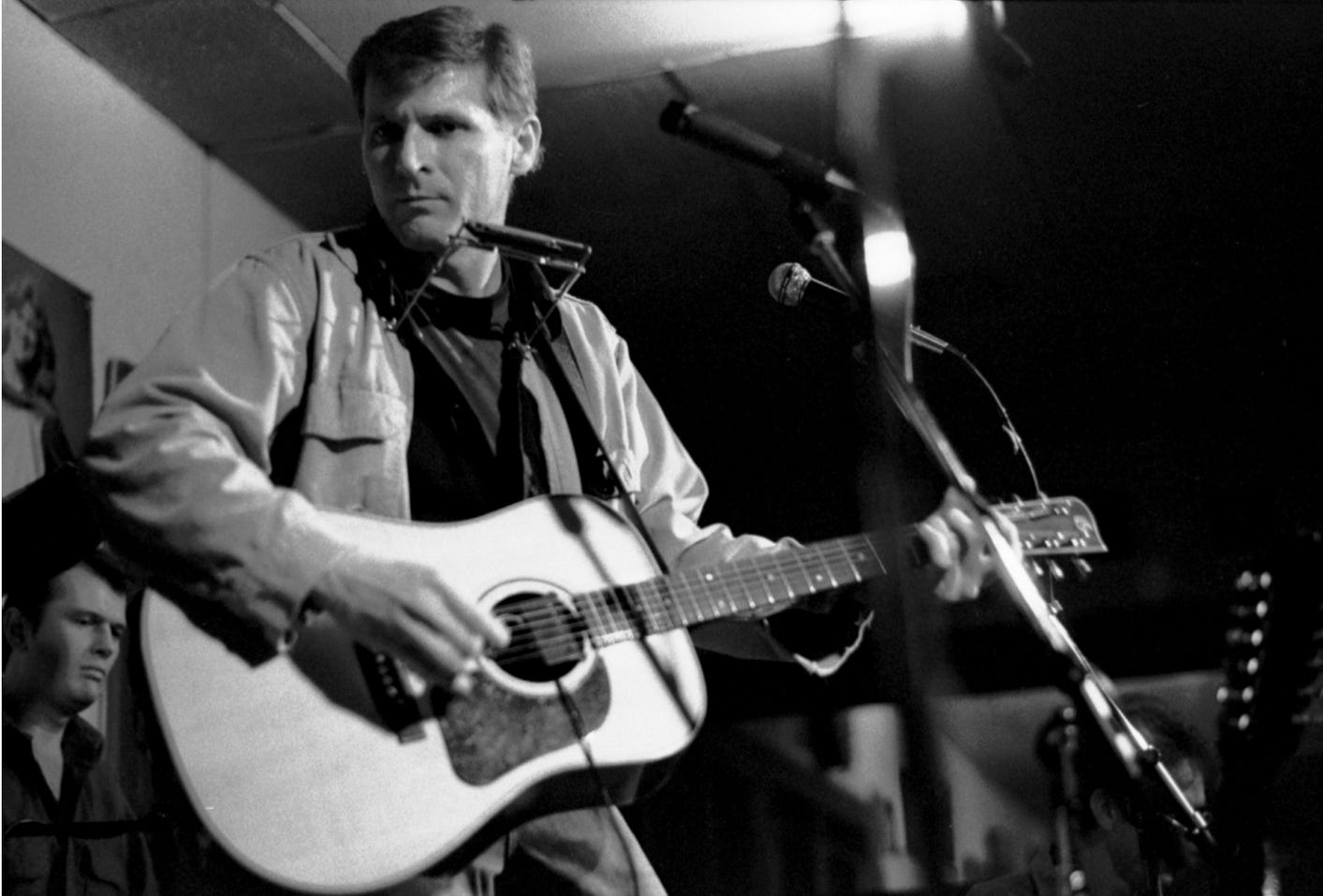Clubland Paradise #2: singer-songwriter havens
From '72- '83, Castle Creek, Spellman's and emmajoe's kept the vagabond troubadour tradition alive in tag team fashion
CASTLE CREEK 1972- 1976
The 1411 Lavaca Street address holds a lot of history, with the Chequered Flag folk club there in the ’60s, and the Comedy Workshop, Austin’s home for Sam Kinison, Bill Hicks and many more, at 15th and Lavaca in the ‘80s. From 1972- 1976 it was Castle Creek, a 285-capacity listening room that rocked. There was a strict “no talking” rule when it was an acoustic act, but all hell was known to occasionally break loose, as when Little Feat made their Texas debut at the club in 1972.
This 20-year-old piano player named Doug Moyes had the idea to open a farm club to the 1,500-capacity Armadillo, but he needed a partner with club experience and that was Tim O’Connor, in his mid-‘20s, who had been running a small venue in Colorado. Castle Creek was named after an area near Aspen where Moyes had camped a couple years earlier. Soap Creek would not open for another year, so there’s was no name confusion in the beginning.
Opening on a shoestring with Lightnin’ Hopkins, who played often in Austin, Moyes and O’Connor scraped together just enough money to pay a $1,500 deposit for banjo legend Earl Scruggs, then sold out all four nights. They were off! John Prine also played early in the club’s run, and told Steve Goodman. Or maybe it was the other way around. Word got out.
O’Connor met Willie at Castle Creek in 1972, then left the club two years later to work fulltime as his promoter and business partner. Moyes sold the club in ‘75 to Jim Cannon, who sold it to a pair of Houston jazz fans the next year and that didn’t work at all. Singer-songwriters were the bread-and-butter.
“One night Jerry Jeff Walker asked me if a friend of his from Florida could play for five or 10 minutes and it turned out to be Jimmy Buffett,” O’Connor told me in ‘96. “He came back and played many times and just loved the place.” After he got too big to play clubs, Buffett mentioned Castle Creek from the stage whenever he played Austin.
The alley next to the club was the inspiration for the Michael Martin Murphey song “Alleys of Austin” (shown on the album cover painting above), while Guy Clark had his first of many mad dog margaritas at the Texas Chili Parlor next door, waiting for someone to come by and tell him “five minutes.” Enough history was made in just a couple years, that Castle Creek has earned the “legendary” tag.
Spellman’s Cafe 1410 W. Fifth St. 1974- 1981
Opened in 1974 by UT student David Spellman, who invested an inheritance on a place where he’d love to hang out, drink beer and play dominoes, this ramshackle restaurant/club was neighbors with a hobo camp down by the railroad tracks, a pillow factory and the city’s shortbus barn. Not exactly a lovely setting, but to the groovers who lived in big party houses on 6th Street west of Lamar (splitting $300 rent four ways), Spellman’s was paradise!
Spellman stocked the jukebox with his favorite records (lotsa Willie), served good food and 25-cent longnecks- who needed more?- so the joint didn’t become known for live music ‘til namesake got his masters and moved away to teach college math.
Under new owner Charles Walthall and managers Tom Brown and Kerry Reid, Spellman’s became “the home of the old hippie,” so tagged by John Kelso in a 1980 column, which also called the Spellman Burger, on a wheat bun with sprouts, the best he’d ever had in Austin.
Texas Monthly also blurbed about the food until Walthall asked them not to anymore. He was tired of well-heeled TM-ers coming in, recoiling at the Spahn Ranch vibe, and then getting the hell out.
Lucinda Williams, piano player Robert Shaw, John Clay and the Lost Austin Band, Mandy Mercier and many others played here from ‘78-’81, when there was live music seven nights a week. White country blues picker Bill Neely held court every Sunday night, often accompanied by Larry Kirbo and Kenneth Threadgill. Townes Van Zandt and Blaze Foley were regulars, playing a New Year’s Eve co-bill on the last night of 1980. The pair often slept in the barfly bunkbed- one on the pool table and the other underneath it. The janitor also slept at Spellman’s, and it was OK with Walthall because there was nothing worth pawning. And it meant he didn’t have to come in early to let him in.
emmajoe’s 3023 Guadalupe St. 1981-1983
“The night we closed the Alamo Lounge (400 W. Sixth St.) on Nov. 13, 1981, we had Butch Hancock, Jimmie Gilmore and Joe Ely,” recalled owner Bobby Nelson (not Willie’s sister). “And the very next night we opened emmajoe’s with Butch, Jimmie and Joe. It was a continuation in spirit of the Alamo, but emmajoe’s was even more like home for the musicians.”
Butch Hancock built the bar with wood from old doors the Alamo Hotel was going to scrap, and all the Alamo regulars like Lucinda Williams, Townes Van Zandt, Nanci Griffith, “Lisa” Gilkyson and Bill Neely had some input on where the stage should go and the best sound system for the room. Lyle Lovett played happy hours for tips, debuting “If I Had a Boat” to 10 people.

In framed mugshots above the bar were those who inspired the name: early 20th Century radical socialists Emma Goldman and Joe Hill. The ladies room said “Emmas” and the men’s room said “Joes.”
The club’s only recognized holidays were Labor Day and International Women’s Day, which was a big mindset departure from previous tenant, the topless bar Fat Face Ernie’s.
Emmajoe’s was open only two years, but it held an important place in the Austin singer-songwriter scene. The 100-capacity club next to Wheatsville was the link between the Alamo Lounge, also managed by Nelson’s boyfriend/husband Martin Wiginton, and the Cactus Cafe, where bartender Griff Luneburg had just been promoted to booker/ soundman in ‘83.
Before the Alamo Lounge, which had the great atmospheric advantage of being in a rundown hotel downtown, Nelson and Wiginton reopened the Split Rail in 1977, which was a brutal introduction to club life. Wiginton passed away in 1992 from lung cancer.








Corky: that is Wes McGhee with Kimmie Rhodes and me in the photo. Good article. I played Emmajoe’s, Spellman’s, the Alamo Lounge, Castle Creek—a lot of these.
My dad was Bill Neely. We met a lot of these musicians thru him. We sure do miss him. I do enjoy reading all the articles about him. And find all the pictures I can find. Thank you. Wilma Crocker